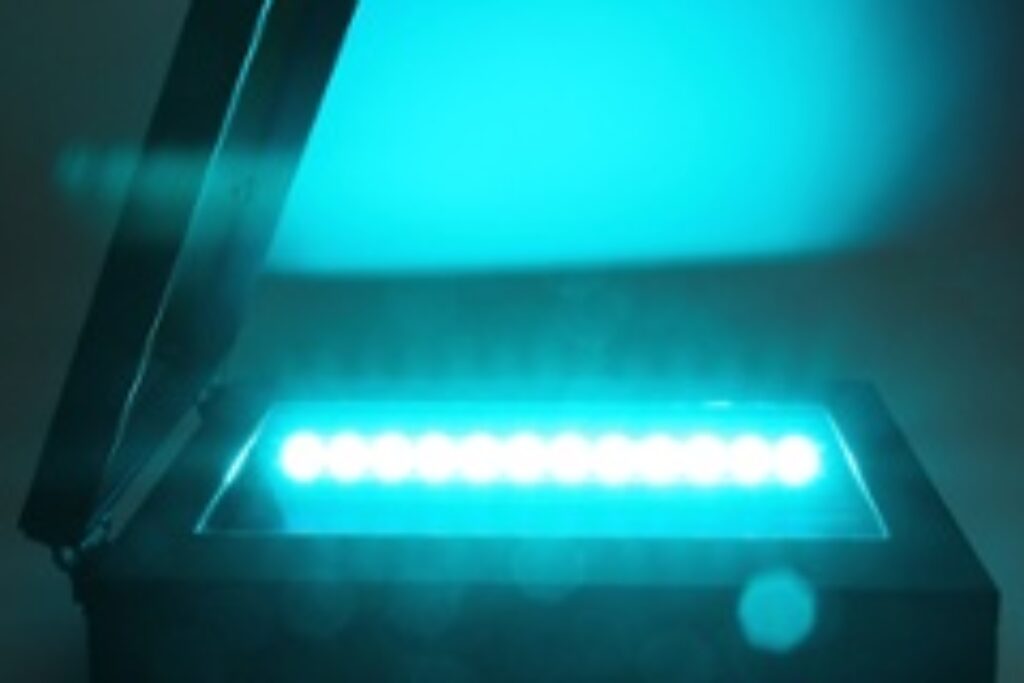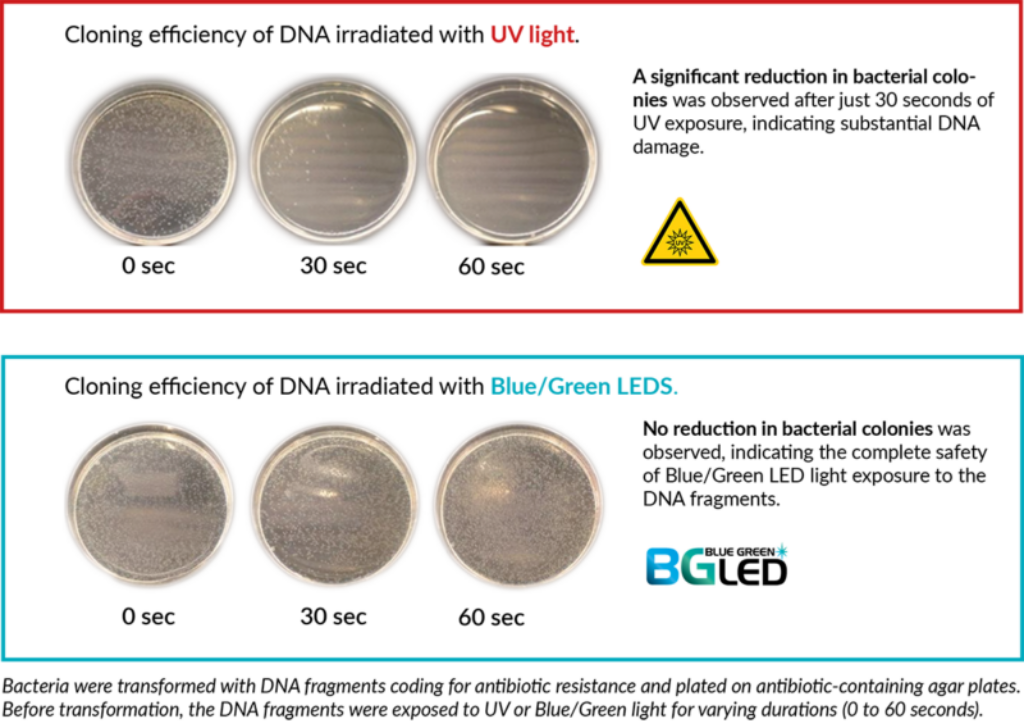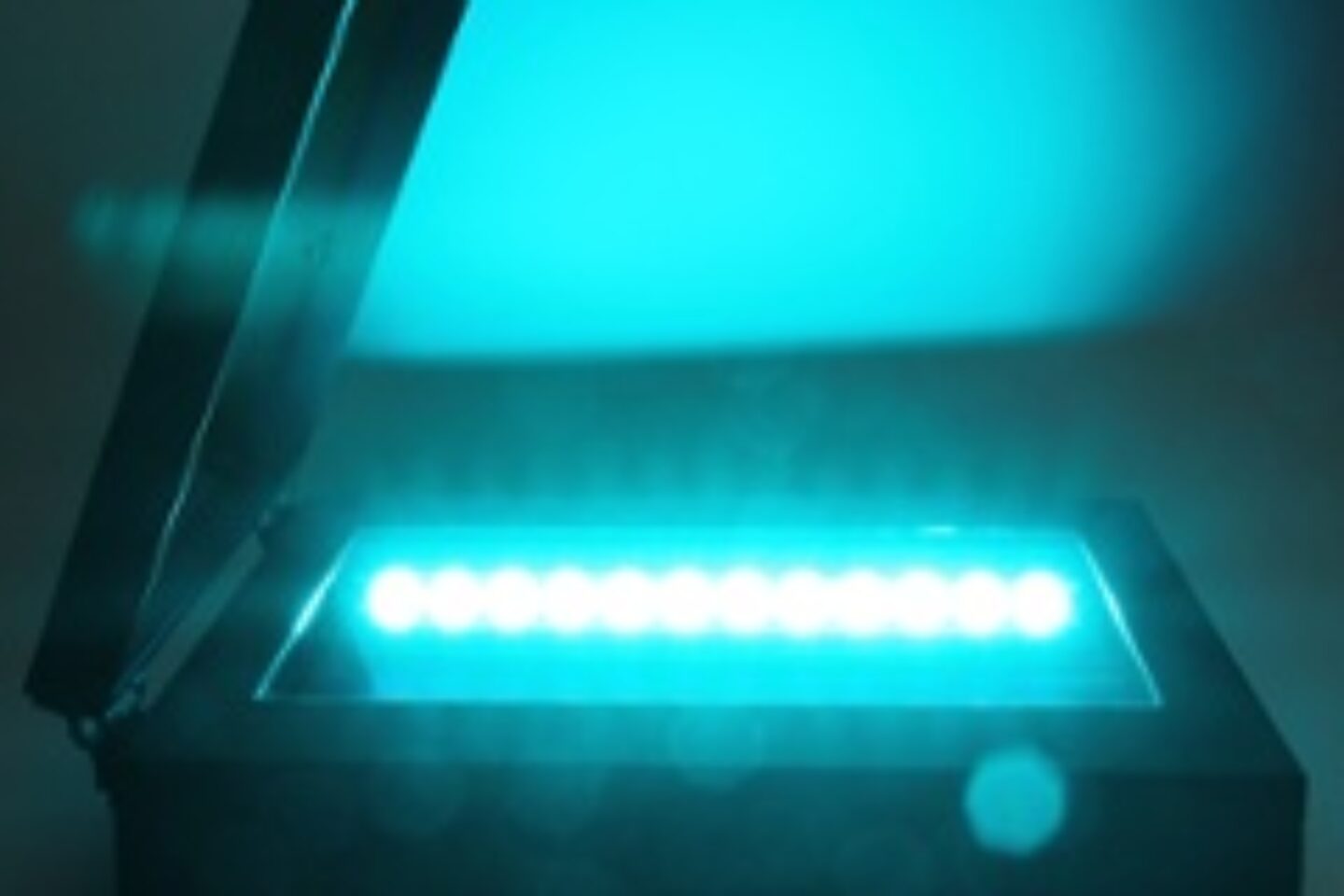
Blue/Green LED Technology
Safe detection of all RED and GREEN DNA dyes
The Blue/Green Revolution
What is Blue/Green LED light?
- The Blue/Green LED technology is a safe and revolutionary method for the detection of stained nucleic acids.
- The technology uses a combination of wavelengths in a light spectrum ranging from 470 nm to 520 nm. This light range lies in the visible light spectrum and is not harmful for the user or for the DNA sample.
- As the fundamental part of our basic and advanced gel documentation systems, Blue/Green LEDs efficiently excite all common red and green DNA dyes (such as ethidium bromide or MIDORIGreen) with a very high intensity.
- On this page, we would like to demonstrate the biggest downsides of commonly used UV-light for DNA visualization, explain the advantages and revolutionary technology behind Blue/Green LED light and introduce our impressive Blue/Green LED Gel Documentation systems.

Blue/Green LEDs are completely safe
While traditional UV transilluminators remain common, they pose risks such as DNA damage and user harm.
UV light is highly energetic and can cause DNA strand breaks, mutations, and thymine dimers, compromising DNA quality and making it unsuitable for cloning, sequencing, and other applications.
Degraded sample integrity can lead to failed experiments or unreliable results.
Blue/Green LED Technology emits light in the safe 470-520 nm range.
This spectrum eliminates the risks associated with UV light exposure of common transilluminators.

Blue/Green LEDs show increadible sensitivity.
Common Blue LED transilluminators, operating only at a single wavelength of 470 nm, also present challenges. Their inefficient excitation of a wide range of DNA dyes results in poor visualization and unsatisfactory imaging quality. This lack of sensitivity with various fluorescent dyes forces researchers to use multiple devices, complicating workflows and increasing costs.
In contrast, high-intensity Blue/Green LED light, with a broad spectral range between 470 nm – 520 nm ensures superior excitation of various dyes, resulting in brighter and clearer images.
Blue/Green LEDs can excite a wide range of fluorescent dyes.
Blue/Green LED technology offers superior excitation across a broad spectrum of 470–520 nm, making it highly effective for a wide range of fluorescent dyes. Unlike single-wavelength Blue LEDs, this broad range ensures that green, red and yellow nucleic acid dyes absorb energy with maximum efficiency, resulting in high-intensity fluorescence.
Not only nucleic acid dyes, but also fluorescent protein dyes can be efficiently excited with Blue/Green LED technology. This extends the application of the system beyond DNA and RNA visualization, making it a powerful tool for protein analysis as well.

Blue/Green LED NEWS
User success stories

Get your own Blue/Green LED system!
If you have questions regarding the use of Blue/Green LED technology or you are interested in a detailed product demonstration of one of our Gel documentation systems, please contact us:






